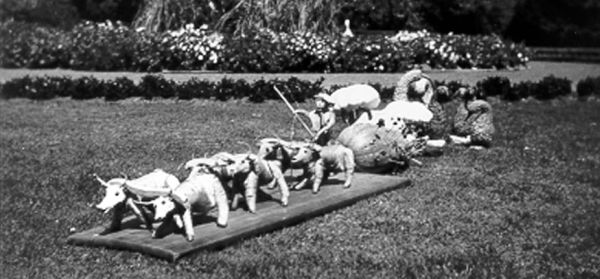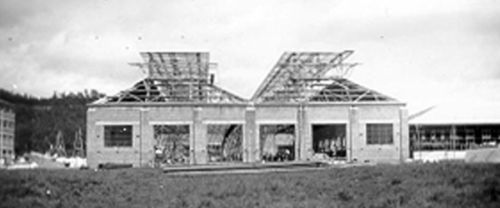 |
 |
|
Vegetables other than Potatoes
An important part of the Aborigines' diet was vegetables, such as native carrot, native potato, and the pith from manferns. Europeans planted vegetables enthusiastically, Cook at Adventure Bay (kidney beans), the French at Recherche Bay (cabbages, sorrel), and Charles Bishop at Cape Barren Island on a sealing trip in 1798–99. Knopwood recorded the first crop of green peas at Risdon in 1804. He himself planted peas, carrots, beans, onions, turnips, cabbages, lettuce and asparagus, and many Tasmanian households followed, growing vegetables for private consumption and, later, preservation by bottling. European vegetables grew well in Tasmania's temperate climate, especially in the north-west. Farmers supplied local markets, and turnips, swedes and mangel-wurzels were grown as fodder. Because of their perishable nature, most fresh vegetables could not be sent far, though by 1900 split peas, turnips and tomatoes were exported. From the 1880s, some Chinese immigrants, such as the Chung Sing family, were noted market gardeners. By the 1920s the picture had scarcely changed: split peas, turnips and mangel-wurzels were by far the largest crops, and some vegetables were processed into pickles and sauces. When processing factories were set up, large-scale growing of other vegetables became profitable. During the Second World War demand grew for dehydrated and canned vegetables for the armed forces. Tasmania, an excellent vegetable-growing region, was an obvious site, and the federal government established dehydration plants at Smithton, Ulverstone and Scottsdale, and a cannery at Devonport. In Hobart, Henry Jones and Co canned cabbages, beetroot, carrots and peas. Production of vegetables soared, mainly peas, carrots, cabbages and parsnips.
After the war, the factories were sold to local operators such as Henry Jones and Edgells, and the Army (Scottsdale), who researched and prepared dried vegetables for ration packs. In the 1950s factories concentrated on freezing, drying and canning a variety of vegetables. For years, green peas for canning was Tasmania's largest vegetable crop. As frozen vegetable demand increased, dehydration largely stopped in the 1970s, and canning in the early 1990s. By 1993 Edgells' Devonport factory was the largest frozen mixed vegetable plant in the southern hemisphere. Ulverstone and Scottsdale became potato-processing factories, leaving the Smithton (taken over by McCain Foods, 1984) and Devonport (Simplot, 1995) plants as multipurpose vegetable processors. Tasmania supplies 85 percent of Australia's frozen peas, and 75 percent of frozen beans. Vegetables are mainly grown on the north-west coast, the midlands and the Coal River valley. There have been many changes in vegetable processing, with crops processed in the 1940s and 1950s, such as beetroot, parsnips and swedes, ignored today. Onions were preserved by pickling, and in the 1940s Elvina Fehlberg set up Blue Banner Pickled Onions, with a factory in Montrose from 1950. After several changes of management, Blue Banner still pickles onions. The onion industry remained small until exports grew from 1971, with expansion from 1987, and a peak year of 96,000 tonnes exported in 1996. The amount has since declined to about 55,000 tonnes a year. Since the 1950s, growers have benefited from new fertilisers and seeds developed by various research bodies, and new methods of growing vegetables commercially, such as in hothouses and hydroponically. From the 1980s, Hmong immigrants rose to prominence as vegetable growers. The market for fresh vegetables has expanded, faster transport meaning that export to the mainland and overseas is viable for all crops, particularly specialties. New vegetables have been grown for export, especially to Japan: kabocha (Japanese pumpkin), Japanese Kyoto carrots, soramame (Japanese broad beans) and wasabi, as well as truffles, coloured capsicums and cherry tomatoes. Further reading: M O'Brien, Tasmania's war effort, [Launceston, 1946]; McCain Foods, 50 th anniversary, Smithton, 1993. Alison Alexander |
Copyright 2006, Centre for Tasmanian Historical Studies |

